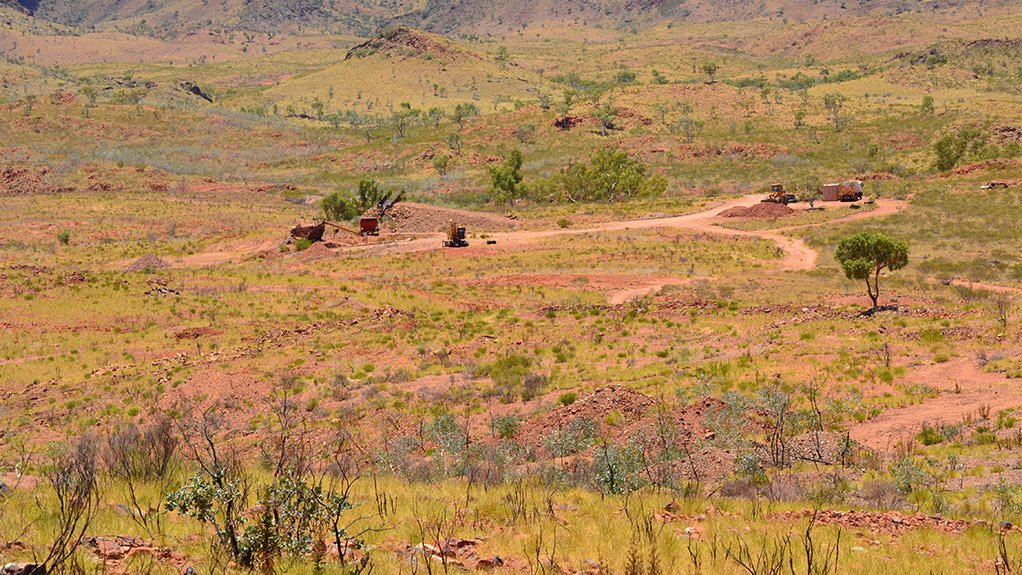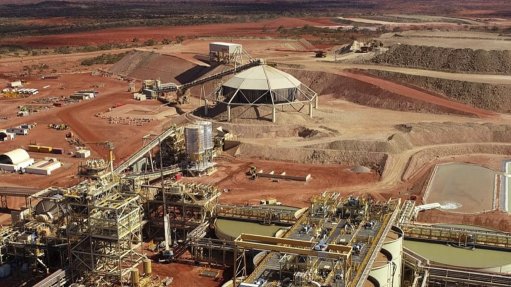Australian gold exploration progressing



SMALL-SCALE MINING West Wits Mining is expecting to start its mining operations at the Tambina project before the end of this year
EXPLORATION HEADWAY Exploration planning is progressing well at West Wits Mining's Mt Cecilia project
Exploration and development company West Wits Mining’s (WWI’s) Australian projects, which show similarity to South Africa’s Witwatersrand (Wits) gold deposits, plans to leverage the geology team’s experience of South Africa’s Wits basin to rapidly understand the geology of its two Pilbara assets in the northern region of Western Australia.
“This experience and understanding give us an advantage, compared with our peers in advancing the Tambina and Mt Cecelia assets. We have learnt a lot in building our Wits resource, which is now in development with small-scale production. The Witswatersrand basin project is gathering pace and is on track to fulfil our vision of becoming a midtier gold producer,” says WWI investor relations head Simon Whyte.
Tambina has three mining licences, with exploration under way, while the Mt Cecelia project is awaiting the granting of a licence pending the finalisation of the Alternative Heritage Agreements with the Native Title Parties.
Whyte says the company is expecting the agreement to be finalised soon.
He says exploration planning is already progressing at Mt Cecelia, but given that the licence is still in the early stage of granting, the company is restricted to the use of desktop studies.
Tambina
At Tambina, the latest announcement in June confirmed a continuous gold-bearing conglomerate and area of mapped conglomerates, 1 600 m north-south by 350 m east-west. Mapping and sampling have started on site in April and the company is assessing whether to start small-scale mining.
“We had three field trips to the site since acquiring the project in January 2018. We obtained extensive sampling of the conglomerate horizon where it outcrops. We are expecting the final geology report from our contractor, with assay results that will be released to the market any time now.”
Whyte says the company is trying to keep exploration costs low, having spent about $85 000, with the focus being on confirming the conglomerate outcrop and analysing the previous exploration results.
“We do actively watch other mining companies in the area, but we are not looking to spend significant money to replicate their bulk sampling, as we have the mining licences and can effectively sample through production.”
He says other mining companies are taking bulk samples of up to 8 t to the laboratories for assay, which is not only costly but also causes a significant backlog and delayed assay results.
Whyte says the company’s initial project plan is to consider small-scale mining operations with a focus on the near-surface conglomerate. “We are continuing to test this idea in the field and will mobilise a small team with the relevant contract equipment for mining operations.”
He says the company expects to start its mining operations at Tambina before the end of this year.
Whyte is adamant that the cost for the mining development will be low, and the company will use contractor mining that will require working capital only. “The use of contractors would be similar to our current opencast project in the Wits basin, in South Africa, where we are producing in the range of 800 oz/m to 1 000 oz/m on a government directive.”
He says the Wits basin mine is delivering free cash flow of about $160 000/m and the company is looking to ramp up operations in the second half of this year.
Meanwhile, WWI is one of the sponsors of this year’s Africa Down Under conference taking place from August 29 to 31 in Perth, Western Australia. Whyte says the company is looking forward to presenting information on its Central Rand project, which is part of the Wits basin projects, and gaining insights from various industry experts who will speak about the geology of the gold occurrences in the Pilbara region.
The Wits basin projects comprises two historic mining centres, known as the Durban Roodepoort Deep and the Rand Leases, in the south-west of Johannesburg.
Whyte says the company is focused on expediting the mining permit and mining right applications with local regulatory bodies, which, upon approval, will significantly increase its current gold production.
Comments
Press Office
Announcements
What's On
Subscribe to improve your user experience...
Option 1 (equivalent of R125 a month):
Receive a weekly copy of Creamer Media's Engineering News & Mining Weekly magazine
(print copy for those in South Africa and e-magazine for those outside of South Africa)
Receive daily email newsletters
Access to full search results
Access archive of magazine back copies
Access to Projects in Progress
Access to ONE Research Report of your choice in PDF format
Option 2 (equivalent of R375 a month):
All benefits from Option 1
PLUS
Access to Creamer Media's Research Channel Africa for ALL Research Reports, in PDF format, on various industrial and mining sectors
including Electricity; Water; Energy Transition; Hydrogen; Roads, Rail and Ports; Coal; Gold; Platinum; Battery Metals; etc.
Already a subscriber?
Forgotten your password?
Receive weekly copy of Creamer Media's Engineering News & Mining Weekly magazine (print copy for those in South Africa and e-magazine for those outside of South Africa)
➕
Recieve daily email newsletters
➕
Access to full search results
➕
Access archive of magazine back copies
➕
Access to Projects in Progress
➕
Access to ONE Research Report of your choice in PDF format
RESEARCH CHANNEL AFRICA
R4500 (equivalent of R375 a month)
SUBSCRIBEAll benefits from Option 1
➕
Access to Creamer Media's Research Channel Africa for ALL Research Reports on various industrial and mining sectors, in PDF format, including on:
Electricity
➕
Water
➕
Energy Transition
➕
Hydrogen
➕
Roads, Rail and Ports
➕
Coal
➕
Gold
➕
Platinum
➕
Battery Metals
➕
etc.
Receive all benefits from Option 1 or Option 2 delivered to numerous people at your company
➕
Multiple User names and Passwords for simultaneous log-ins
➕
Intranet integration access to all in your organisation



















